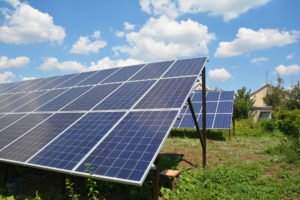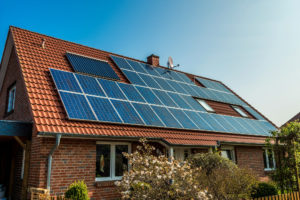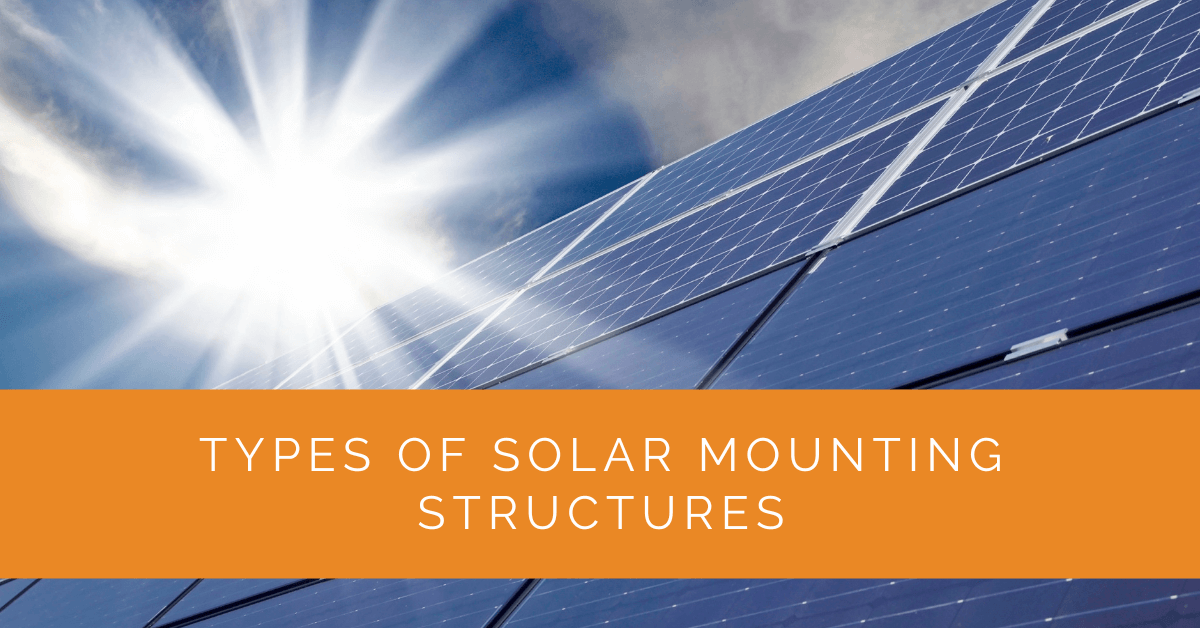In our quest for cleaner and more sustainable energy sources, solar power has emerged as a frontrunner in the world of renewable energy. While the role of solar panels in harnessing solar energy is well-known, the importance of selecting the right solar mounting structures should not be underestimated. These structures provide the foundation for installing solar panels, impacting their efficiency, durability, and overall performance. In this comprehensive guide, we’ll dive into the diverse realm of solar mounting structures, shedding light on various options to help you make informed decisions tailored to your unique needs.
Contents
- 1 Key Takeaways
- 2 Roof-Mounted Solar Mounting Structures
- 3 Ground-mounted solar Mounting Structures
- 4 Module Mounting Structures
- 5 Pros and Cons of Different Solar Mounting Structures
- 6 Case Study: Optimizing Solar Energy with the Right Mounting Structure
- 7 Expert Insights From Our Solar Panel Installers About Types of Solar Mounting Structures
- 8 Experience Solar Excellence with Us!
- 9 Conclusion
Key Takeaways
- Selecting the appropriate solar mounting structure is critical for optimizing panel efficiency and longevity, whether you have pitched, flat, or tile roofs.
- Ground-mounted options, ranging from fixed-tilt to tracking systems, offer diverse strategies for energy capture, with fixed-tilt being cost-effective and tracking systems maximizing energy output.
- Rail-based, rail-less and integrated module mounting structures provide flexible, efficient, and aesthetically appealing ways to install solar panels, catering to various installation needs and preferences.
Roof-Mounted Solar Mounting Structures
Pitched Roof Mounting
Pitched roof mounting is a popular choice for residential solar installations. This approach involves strategically placing solar panels on the sloped surface of the roof to maximize sun exposure. Calculating the appropriate tilt angle based on location is crucial for optimizing solar irradiance. The versatility of pitched roof mounting is noteworthy, as it can adapt to various roof types, including traditional asphalt shingle roofs and more unconventional metal and tile roofs. Beyond energy efficiency, this type of mounting also enhances ventilation for the solar panels, contributing to their performance and longevity.
Flat Roof Mounting
Flat roof mounting systems come into play in the commercial sector and larger-scale solar installations. These systems are designed to accommodate the demands of commercial buildings with expansive flat roof spaces. Options within this category can be broadly classified into ballast-mounted systems and penetrating systems. Ballast-mounted systems use weights to secure solar panels without roof penetration while penetrating systems create roof penetrations for secure installation. The choice depends on the building’s structural considerations and ability to support additional loads.
Tile Roof Mounting
Tile roofs are common in certain regions and often pose unique challenges for solar panel installations due to their fragile nature. Mounting solar panels on tile roofs requires a specialized approach to avoid compromising the roof’s integrity. Solar installers can minimize the risk of leaks and structural damage by employing mounting solutions tailored to tile roofs. Tile roof mounting solutions combine aesthetics and functionality, allowing homeowners to harness solar energy without sacrificing the architectural appeal of their homes.

Ground-mounted solar Mounting Structures
Fixed-Tilt Ground Mounts
Ground-mounted solar systems become an ideal solution for scenarios where vast expanses of land are available. Fixed-tilt ground mounts are efficient and practical among the options in this domain. These stationary structures have a predetermined tilt angle strategically calibrated to optimize solar energy capture. Fixed-tilt ground mounts offer a cost-effective solution with straightforward installation and minimal maintenance requirements, making them suitable for larger solar installations like solar farms.
Tracking Ground Mounts
For those aiming to maximize energy output, tracking ground mounts provide a technologically advanced option. These systems feature single- or dual-axis tracking capabilities, designed to follow the sun’s path throughout the day. Single-axis tracking systems pivot the panels from east to west, tracking the sun’s movement along the horizon. Dual-axis systems also consider changes in the sun’s elevation. While tracking systems offer higher energy yields, their complexity and cost are also higher, primarily due to moving parts.
Module Mounting Structures
Rail-Based Mounting
Rail-based mounting structures are a cornerstone of residential and commercial solar installations. These systems use aluminum rails to support and secure solar panels. Their versatility allows for a dynamic range of panel positioning to achieve the desired exposure angle to sunlight, crucial for optimizing energy generation. Rail-based mounts are reliable and widely used in the solar industry due to their proven track record.
Rail-Less Mounting
Innovations in solar mounting have led to the development of rail-less mounting systems, which eliminate the need for traditional rails. Instead, specialized brackets and clamps secure solar panels directly onto the mounting structure. This approach simplifies installation and reduces material requirements, making it suitable for residential installations with space constraints. While it offers simplified installation, it may require specialized mounting hardware and has limited options for adjusting panel positioning.
Integrated Module Mounting
Beyond energy generation, integrated module mounting focuses on seamlessly blending solar panels with architectural structures. This approach transcends the practical aspect of solar installations, enhancing aesthetics and functionality. Integrated mounts can be incorporated into facades, awnings, and various architectural elements, creating a harmonious fusion of renewable energy generation and architectural finesse.

Pros and Cons of Different Solar Mounting Structures
When choosing a solar mounting structure, it’s essential to consider the advantages and disadvantages of each option to align with your energy goals and installation requirements. These pros and cons should help you choose the most suitable solar mounting structure for your specific solar energy project.
| Mounting Structure | Pros | Cons |
|---|---|---|
| Pitched Roof Mounting | – Optimizes sun exposure for residential solar panels. – Enhances ventilation for improved panel performance. | – Limited by roof slope and orientation. – Requires extra steps for installation on high-pitched roofs. |
| Flat Roof Mounting | – Suitable for commercial buildings and large installations. – Can use ballast for weight distribution. | – Ballast systems can be affected by wind uplift. – Penetrating systems may require roof penetration, potentially leading to leaks. |
| Tile Roof Mounting | – Integrates with tile roofs without compromising aesthetics. | – Requires careful attachment to avoid damaging tiles. – It may not be suitable for all tile types. |
| Fixed-Tilt Ground Mounts | – Optimized angle for consistent energy production. – Cost-effective and easy maintenance. | – Limited adjustment compared to tracking systems. – Requires sufficient open land space. |
| Tracking Ground Mounts | – Maximizes energy output by tracking the sun’s movement. – Ideal for high-energy demand situations. | – Higher upfront costs due to complexity. – Increased maintenance due to moving parts. |
| Rail-Based Mounting | – Versatile panel positioning for optimal sunlight exposure. – Reliable and widely used in residential and commercial installations. | – Requires additional materials (rails) and installation time. |
| Rail-Less Mounting | – Streamlines installation process and reduces material costs. – Ideal for residential rooftops with space constraints. | – May require specialized mounting hardware. – Limited adjustment options for panel positioning. |
| Integrated Module Mounting | – Enhances aesthetics by seamlessly blending panels with architecture. – Creative and unique solar installation option. | – May require custom design and installation expertise. – Higher cost due to customized integration. |
Case Study: Optimizing Solar Energy with the Right Mounting Structure
Background
At Solar Panels Network USA, we understand that the foundation of an efficient solar system lies in selecting the right mounting structure. Recently, we undertook a comprehensive project to install solar panels across different types of properties, including residential homes with pitched roofs, commercial buildings with flat roofs, and open land for a solar farm. Our objective was to optimize solar energy capture and efficiency by choosing the appropriate mounting structures for each unique situation.
Project Overview
This project aimed to showcase the versatility and importance of selecting the right solar mounting structure. We planned to install solar panels on a residential home with a pitched roof, a commercial building with a flat roof, and a solar farm on open land. Each installation required a tailored approach to meet the specific needs of the site while maximizing energy production.
Implementation
Pitched Roof Mounting for Residential Home
For the residential installation, we used a pitched roof mounting system. The home’s roof had a moderate slope and faced south, ideal for maximizing solar exposure. We calculated the optimal tilt angle for the panels and used rail-based mounting structures to secure the panels without compromising the roof’s integrity. This setup ensured adequate ventilation for the panels, enhancing their performance and longevity.
Flat Roof Mounting for Commercial Building
In the commercial sector, we faced the challenge of installing solar panels on a large, flat roof. We opted for a ballast-mounted flat roof system, which secured the panels using weights without penetrating the roof membrane. This choice was crucial to avoid potential leaks and structural damage. The flexibility of the ballast system allowed us to position the panels at an optimal angle for maximum sunlight capture, significantly boosting the building’s energy efficiency.
Fixed-Tilt Ground Mounts for Solar Farm
The solar farm installation on open land required a different approach. We selected fixed-tilt ground mounts due to their cost-effectiveness and ease of maintenance. These mounts were installed at a predetermined angle to capture maximum solar energy throughout the day. The fixed-tilt system’s simplicity made it ideal for large-scale installations, ensuring consistent energy production with minimal upkeep.
Results
Enhanced Energy Efficiency
Each installation demonstrated significant improvements in energy efficiency. The residential system provided ample power for the home, reducing reliance on grid electricity. The commercial installation slashed the building’s energy costs, while the solar farm contributed substantial renewable energy to the local grid.
Cost-Effective Solutions
By choosing the appropriate mounting structures, we managed to keep installation costs in check. The ballast-mounted system for the commercial roof avoided expensive roof reinforcements, while the fixed-tilt ground mounts offered a budget-friendly solution for the solar farm.
Long-Term Sustainability
The tailored mounting solutions not only optimized energy capture but also ensured long-term sustainability. Properly mounted panels experienced less wear and tear, reducing maintenance costs and extending the systems’ lifespan.
Summary
Our project at Solar Panels Network USA highlighted the critical role of selecting the right solar mounting structures. From pitched roof mounts for residential homes to ballast-mounted systems for commercial buildings and fixed-tilt ground mounts for solar farms, each structure was chosen to match the specific needs of the site. This approach maximized energy efficiency, reduced costs, and ensured long-term sustainability. Our experience underscores the importance of expert guidance in selecting the right mounting structure to achieve optimal solar energy generation.
Expert Insights From Our Solar Panel Installers About Types of Solar Mounting Structures
Choosing the right solar mounting structure is critical for maximizing your solar panel efficiency. Each type, whether it’s for pitched roofs or ground mounts, has its unique benefits and challenges that must be carefully considered.
Senior Solar Engineer
Flat roof mounting systems are fantastic for commercial applications. They offer flexibility and can handle larger installations without compromising the building structure.
Commercial Solar Installation Specialist
Integrated module mounting not only optimizes energy generation but also adds an aesthetic value to buildings. It’s an excellent choice for those looking to blend functionality with design.
Residential Solar Installation Expert
Experience Solar Excellence with Us!
Trust in Solar Panels Network USA, where our seasoned experts deliver top-quality solar solutions for homes and businesses nationwide. With a legacy of countless successful installations and a commitment to sustainable energy, we’re your reliable partner in the solar journey. Ready for a brighter, eco-friendly future? Call us now at (855) 427-0058 and harness the power of the sun!
Conclusion
As we conclude our exploration of the world of solar mounting structures, it’s clear that these structures are the cornerstone of solar panel installations. Whether you have a residential rooftop, a vast field, or an architectural landscape as your canvas, choosing the right solar mounting structure is paramount for optimizing solar energy generation. In embarking on your solar power journey, consulting with industry professionals who can tailor recommendations to your specific needs is a wise step. The world of solar mounting structures is intricate and diverse, and expert guidance can ensure a successful and sustainable solar journey. By aligning your energy aspirations with the proper mounting structure, you contribute to a greener and more prosperous future for future generations.
About the Author
Solar Panels Network USA stands at the forefront of solar energy solutions, driven by a team of seasoned solar engineers and energy consultants. With over decades of experience in delivering high-quality solar installations and maintenance, we are committed to promoting sustainable energy through customer-centric, tailored solutions. Our articles reflect this commitment, crafted collaboratively by experts to provide accurate, up-to-date insights into solar technology, ensuring our readers are well-informed and empowered in their solar energy decisions.

